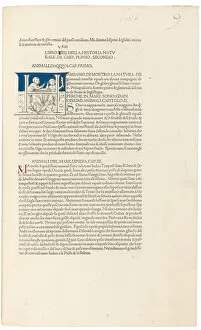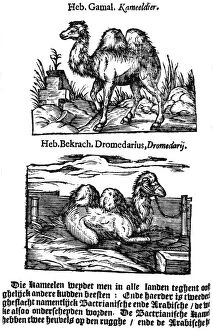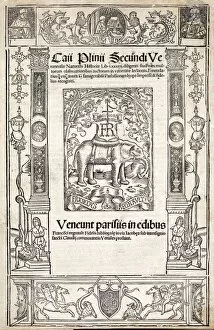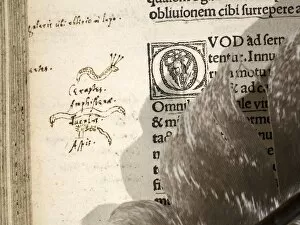Pliny The Elder Collection
"Pliny the Elder: A Renaissance Man of Knowledge and Tragic Fate" Illustration from Plinius Naturgeschichte by J. Heyden, plate 49 from Woodcuts from. . 1937
All Professionally Made to Order for Quick Shipping
"Pliny the Elder: A Renaissance Man of Knowledge and Tragic Fate" Illustration from Plinius Naturgeschichte by J. Heyden, plate 49 from Woodcuts from. . 1937. Creators: Jost Ammon, Max Geisberg, Pliny the Elder In this captivating illustration, we catch a glimpse into the world of Pliny the Elder, a renowned Roman scholar whose thirst for knowledge knew no bounds. With his encyclopedic work "Naturalis Historia, " he sought to unravel the mysteries of nature and share his wisdom with future generations. Death Tragically, it was during one fateful event that history would forever remember him – as he met his untimely demise in the catastrophic eruption of Mount Vesuvius in 79 AD. This depiction captures both awe-inspiring destruction and human vulnerability as Pliny valiantly faced nature's wrath. Conversation between Pliny the Elder and Emperor Vespasian Pliny's intellectual prowess extended beyond academia; he engaged in conversations with influential figures like Emperor Vespasian himself. Their exchange undoubtedly shaped not only their own lives but also impacted society at large. Statue de Pline l'Ancien, érigée en 1498, Cathédrale de Côme (engraving) This engraving immortalizes Pliny's legacy through an imposing statue erected in his honor at Cathedral de Côme. It stands as a testament to his enduring impact on science and literature even centuries after his passing. Perspective of the second eruption of Vesuvius published 1750 (etching) The devastating power unleashed by Vesuvius is vividly captured in this etching – a reminder that even amidst tragedy lies an opportunity for scientific observation and understanding. Through documenting such events, scholars like Pliny laid foundations for modern volcanology.




























